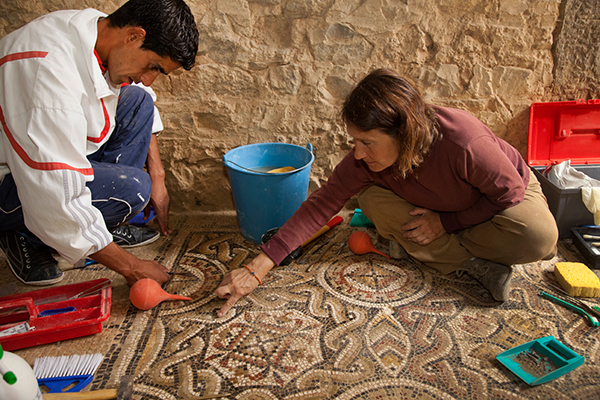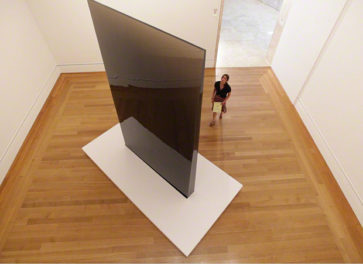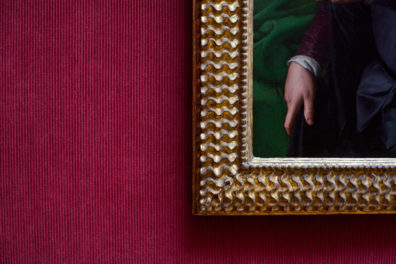From the first to the fifth centuries A.D., the Roman province of Africa Proconsularis—a portion of which is known today as Tunisia—was a vital economic force in the Roman Empire. Evidence of this wealth is found in the archaeological remains of the luxurious houses, villas, and public buildings, many of them embellished with elaborate mosaic pavements.

Panoramic view of the archaeolgical remains of the ancient Roman city of Bulla Regia.
The ancient Roman city of Bulla Regia, in northwestern Tunisia, is the site of a model field project that seeks to conserve and present an entire archaeological structure along with its architectural decoration. As members of the Getty Conservation Institute’s field projects’ team and specialists in mosaics conservation, we’ve been working in Bulla Regia for over two years, in collaboration with World Monuments Fund and the Institut National du Patrimone (INP) of Tunisia, and are excited to see the progress made so far.
Bulla Regia has some 350 excavated mosaics, most of which are in their original context. This is not the norm at most archaeological sites and is one of the reasons that this location was selected for the model field project. Bulla Regia also boasts a unique feature. Perhaps as a means of dealing with extreme heat in the summer, some of the houses include a subterranean level built around a two-story atrium. Many of the mosaics at this subterranean level are generally in good condition and can be experienced in their original architectural setting. The mosaics that have been exposed to the elements, by contrast, are in need of more urgent conservation interventions.

Thomas Roby examining the mosaic pavement in the Maison d’Amphitrite. Photo Scott S. Warren
The model field project is a component of MOSAIKON, our initiative in the Mediterranean region to address the need for improved capacity in the conservation and management of archaeological mosaics. MOSAIKON is a partnership of the Getty Conservation Institute, the Getty Foundation, ICCROM, and the International Committee for the Conservation of Mosaics.
As part of this model field project, INP mosaic conservation technicians trained by the Getty Conservation Institute and base at the site have been engaged in cleaning and stabilization treatments in one of the major houses in Bulla Regia, the Maison de la Chasse (House of the Hunt). The house has already undergone structural interventions by the World Monuments Fund. We anticipate that the conservation work on all 47 in situ mosaics in the Maison de la Chasse will be completed by the end of this year.

GCI consultant and project team member, Livia Alberti, working with conservation technician Mondher Habachi. Photo: Scott S. Warren
The conservation and stabilization work in the Maison de la Chasse goes beyond this one structure alone. It serves as a large-scale example of best practices developed during the Conservation Institute’s more than decade-long involvement in Tunisia for the conservation treatment of mosaics in an archaeological setting.
In addition to the comprehensive conservation program at the Maison de la Chasse, the aim of the Bulla Regia Model Field Project is to develop a conservation plan for all of the site’s excavated mosaics. Given the site’s limited resources, both human and financial, the survival of hundreds of mosaics depends on developing and implementing a prioritized action plan that will provide a much-needed management tool for Bulla Regia.
As a first step in the conservation planning process, the project team developed a rapid survey form and collected data on each mosaic’s condition, significance, and future risk. Our ultimate goal is to establish a model approach for how to conserve, manage, and enhance the public’s appreciation of archaeological sites with mosaics that can be adapted to other similar sites in the region.
This week we’ll be posting photographs of the site and our work on the Getty’s Facebook page—come join us there for more information on the project, and more views of Bulla Regia’s remarkable mosaics.
The Getty Conservation Institute’s work at Bulla Regia is generously supported by the GCI Council.




Comments on this post are now closed.